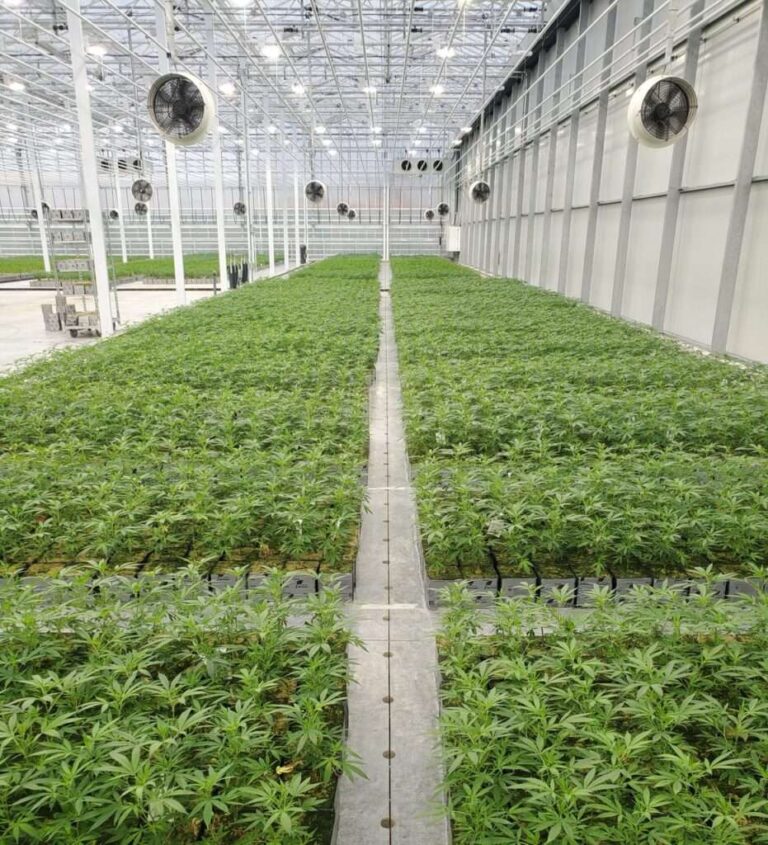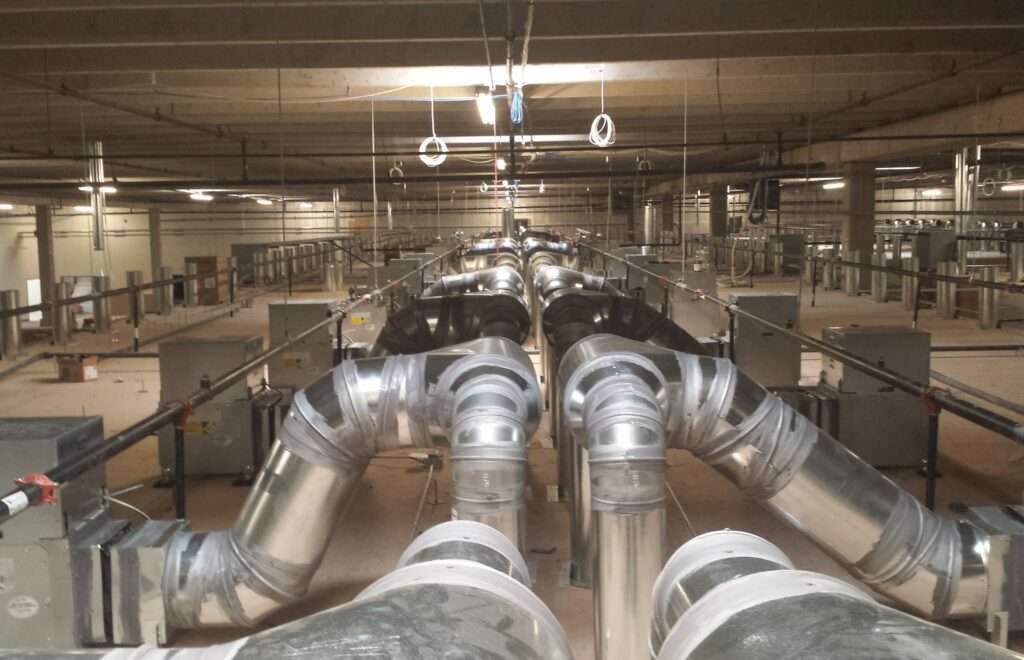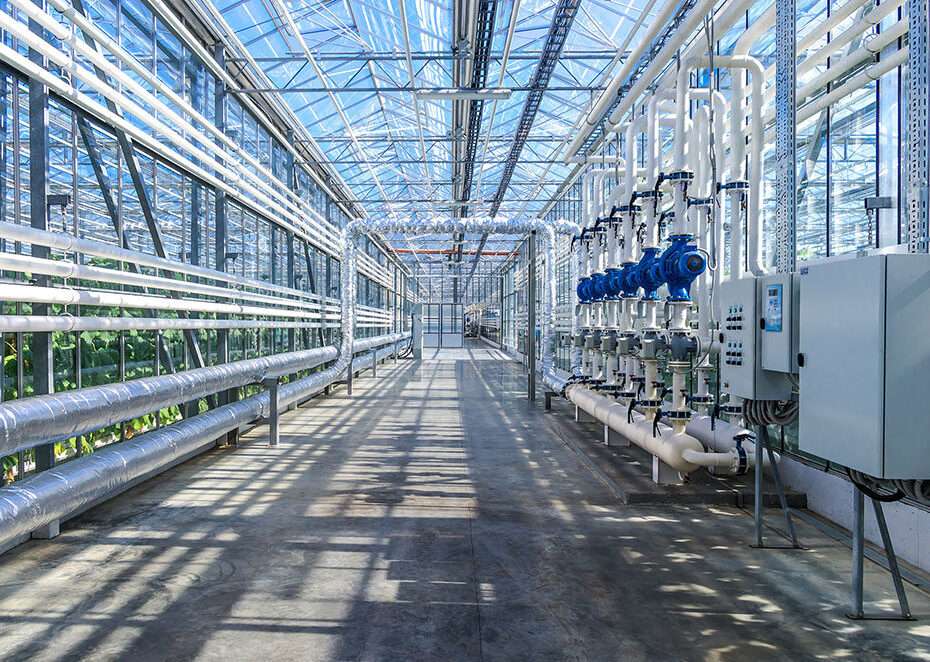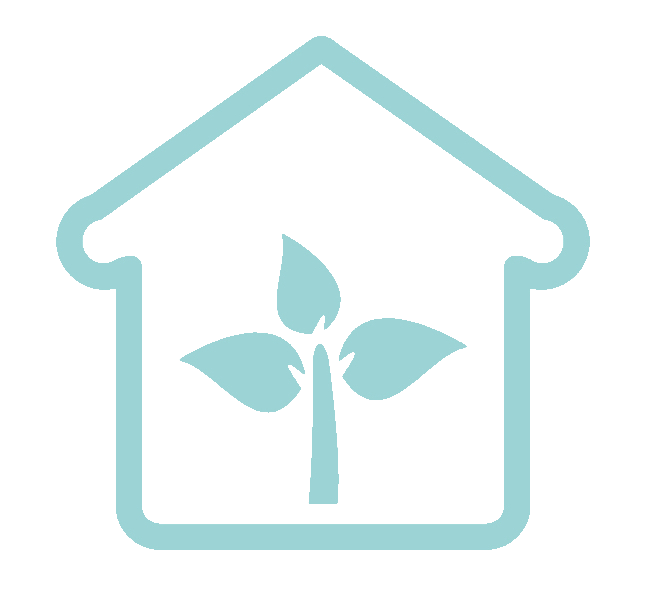Cannabis Facility Design
Design-assist services to ensure designs and calculations align with proven methods, equipment, and systems operational in world-class facilities.
Design An Optimized Cannabis Facility
Facility design is a critical and complex phase when starting a cannabis business, whether it’s a cultivation facility, dispensary, or extraction lab. The process is costly, time-consuming, and requires attention to hundreds of variables that impact operational efficiency, profitability, and overall success.
Cultivation facilities are intricate systems requiring precise temperature, humidity, and air control, while dispensaries must be welcoming and adaptable. Laboratories demand sterility and safety. Regardless of the type of facility, the design significantly influences operational performance and financial outcomes. Before starting the design, our team conducts zoning and market analysis to determine optimal facility size, layout, and equipment specifications, such as power, HVAC, lighting, and water purity. Zoning laws vary by municipality and will impact the design, covering aspects like location, square footage, security, and environmental regulations.
Our design-assist services collaborate with architects and engineers to ensure your facility incorporates proven methods, systems, and equipment from world-class facilities. While some designs may seem functional on paper, flaws often surface once operations begin, leading to inefficiencies or even crop failures. These issues are costly and challenging to address after the facility is built, making it crucial to focus on design details during the planning phase.
Leveraging our operational expertise ensures that every aspect of your facility is optimized for maximum efficiency, quality, and consistency. We’ll guide you through every stage of the design process, from zoning and market analysis to conceptual design and completion. Our team integrates Lean Manufacturing and Six Sigma principles, which focus on eliminating waste, optimizing workflow, and achieving consistent, high-quality production.
Ready to connect with our Cannabis Facility Design experts? Contact us today to learn more or schedule a free consultation!

Key Factors To Keep In Mind When Designing A Cannabis Cultivation Facility
Location
Choose a location for your cannabis cultivation facility based on utilities, market access, local regulations, security, and skilled labor availability.
Facility Size
Determine your facility size based on production goals, available resources, plant count, cultivation methods (indoor, greenhouse, or outdoor), and potential for expansion.
Security
Implement strong security measures, including surveillance cameras, access control, intrusion detection, and secure storage areas.
Climate Control
Establish a controlled environment by regulating temperature, humidity, airflow, and light levels using HVAC systems, dehumidifiers, fans, and supplemental lighting.
Lighting
Choose lighting based on your cultivation method: HID or LED lights for indoor facilities, and natural sunlight with supplemental artificial lighting for greenhouses.
Irrigation And Water Management
Design an efficient irrigation system with automation to adjust water levels based on plant needs, incorporating water recycling or conservation measures to minimize waste.
Ventilation And Odor Control
Install exhaust fans, carbon filters, and odor-neutralizing systems to maintain a healthy environment and control cannabis odors.
Cultivation Method
Choose a cultivation method based on your goals and resources, such as soil, hydroponics, aeroponics, or aquaponics, each with its own requirements and benefits.
Workflow And Efficiency
Design your facility layout to maximize workflow and productivity, considering growing areas, post-harvest processing, storage, and staff movement.
Compliance With Regulations
Familiarize yourself with local, regional, and national cannabis regulations. Ensure your facility design complies with building codes, safety standards, security, and environmental requirements.
Sustainability
Incorporate sustainable practices in your facility design, such as energy-efficient lighting, water conservation, waste management, and renewable energy. Consult with experts in cannabis cultivation, facility design, and local regulations to ensure compliance and success.
Regulations For Cannabis Cultivation Facility Design
Cannabis cultivation is highly regulated. Understanding and complying with local, regional, and national regulations—covering building codes, safety, security, environmental standards, and licensing—is crucial. Partnering with experts like us ensures compliance and success.


Why Partner with Catalyst BC for Your Cannabis Cultivation Grow Facility Design?
Working with us in cannabis cultivation facility design offers significant benefits. Our specialized knowledge ensures compliance with regulations, optimizes layouts for efficiency, and provides tailored solutions that meet your specific needs. This expertise can save time, reduce risks, and increase the success of your operation.
Our team offers design-assist services, collaborating with architectural and engineering teams to ensure designs align with proven methods, equipment, and systems used in world-class facilities. While many designs look functional on paper, flaws often emerge during operation, negatively impacting crop health and performance, or even causing crop failure. Correcting these issues once a facility is operational is expensive and challenging.
Being meticulous during the design phase is crucial to avoid costly mistakes. Without operational experience, it’s easy to oversimplify the design and equipment selection process. Our expertise ensures that no detail is overlooked, and your facility operates with maximum efficiency, quality, and consistency.
Ready to connect with our Cannabis Facility Design experts? Contact us today to learn more or schedule a free consultation!
Frequently Asked Questions
What are the key factors to consider when designing a cannabis cultivation facility?
What is the best cultivation method for a cannabis facility?
How do I ensure proper security for my cannabis cultivation facility?
How Many Grow Rooms Are Typical For an Indoor Cultivation Facility?
In modern cannabis facility design, indoor cultivation is organized into distinct phases, each with its own specialized grow room that maintains optimal environmental conditions, tailored lighting schedules, and specific plant densities. These phases are divided into four key areas: the mother room, clone room, vegetative (veg) room, and flower room.
Mother Room:
In the mother room, large, mature plants are maintained to preserve the genetics needed for production. Occupying about 5% of the total cultivation space, these plants are nurtured for six to eight months before being replaced. Typical conditions include temperatures between 70°F and 85°F with 40% to 55% relative humidity (RH), and the grow lights are generally on for 18 or more hours each day.
Clone Room:
The clone room is where new plants are propagated from the mother plants’ leaves, using small containers or trays arranged on racks. After a period of two to four weeks, these clones are moved to the veg room. Clone rooms are similar in size to mother rooms, with temperatures ranging from 60°F to 80°F and RH levels between 50% and 70%. Grow lights in this area operate between 18 and 24 hours daily.
Veg Room:
In the vegetative room, plants are placed in larger containers on either stationary or movable benches—often arranged in two tiers—and remain in this phase for about six weeks. Typically, veg rooms occupy approximately 20% of the total facility area, maintaining temperatures from 70°F to 85°F and humidity levels from 50% to 65% RH, with grow lights set to 18 hours per day.
Flower Room:
The flower room, which takes up about 70% of the indoor grow area, is dedicated to the final growth stage before harvest, lasting between six and 10 weeks. This room usually features either stationary or movable benches, with some high-output operations incorporating multiple tiers. Optimal conditions in the flower room include temperatures of 72°F to 85°F, humidity levels between 45% and 60% RH, and a lighting cycle of 12 hours per day.
A strategic cannabis facility design ensures that each growth stage is provided with the ideal conditions to maximize plant health and yield, ultimately leading to a more efficient and successful operation.
What Are Essential Features of Modern Grow Rooms?
A highly calibrated cannabis facility design is vital for creating an optimal environment for indoor cultivation. All grow rooms share several common characteristics to ensure plants receive the ideal conditions for growth:
Environmental Control: Each stage of plant development requires precise control of temperature and relative humidity. Monitoring vapor pressure deficit (VPD)—the difference between the vapor pressure at the leaf surface and that of the surrounding air—is essential, as VPD is a function of both temperature and humidity.
Supplemental Lighting: Grow rooms typically use high-intensity discharge lights (such as high-pressure sodium or metal halide) or LED fixtures to provide the necessary light spectrum and intensity. Some jurisdictions may impose limits on light power density or mandate LED usage, influencing decisions in Cannabis Facility Design.
Growing Medium/Substrate: The choice of substrate—whether peat moss, rockwool, or coco coir—varies based on grower preference and the product being developed. This selection plays a critical role in supporting plant health and optimizing growth.
Irrigation and Fertigation: Efficient irrigation systems are a cornerstone of effective facility design. Reverse osmosis water is stored in tanks and then delivered through a fertigation system that mixes precise nutrient formulations tailored to each growth stage. Watering schedules are customized to suit the needs of the plants at different development phases.
Carbon Dioxide Enrichment: Many grow rooms are enriched with CO₂ to boost photosynthesis. Using either bulk tanks or portable cylinders, CO₂ is supplied directly or via the air-handling system, with flower rooms often maintained at three to four times the ambient CO₂ concentration.
Beyond the grow rooms, a well-designed cannabis facility also includes dedicated spaces for irrigation, trimming, drying and curing, extraction, laboratory work, commercial kitchens, packaging, warehousing, waste management, shipping, and administrative functions. Each area is integrated into the overall cannabis facility design to support a vertically integrated operation that is both efficient and compliant with regulatory standards. To learn more, contact our cannabis facility design team for a complimentary consultation.
Other Services

Business Strategy
Collaborative efforts to create a personalized and comprehensive business and operational plans tailored to your market, resources, and vision.
Financial Planning
Strategy and creation of a bespoke financial model based on historical inputs specific to selected corporate structure, facilities, and market conditions.

Licensing & Applications
Catalyst has secured over 57 licenses in merit-based and highly competitive application and RFP processes with a win rate of nearly 96%

Facility Design
Design-assist aligns designs and calculations with proven methods, equipment, and systems successfully used in world-class facilities.

Startup Support
Proven expertise and track record of supporting licensed and conditionally licensed businesses from build-out to operational excellence.

Genetic Development
Design and implement propagation and breeding programs that produce unique and proprietary cultivars that maximize productivity and profitability.

Business Turnaround
Our team brings over 60 years of regulated cannabis industry experience, expertly assessing situations, crafting strategies, and achieving client goals.

Operational Optimization
Catalyst's team of experts provides guidance and support for all types of cannabis business, including cultivation, retail, extraction, distribution, and delivery

Vertical Farming
Vertical farming is the future of sustainable agriculture, and with Catalyst BC’s expertise, you can maximize yields, optimize space, and reduce resource consumption.

Controlled Environment
Partner with Catalyst BC for expert-driven CEA solutions, combining strategic planning, data-driven insights, and industry best practices to optimize your cannabis or hemp cultivation.

Natural Medicine
Partner with Catalyst BC for expert-driven natural medicine, psilocybin, and psychedelic licensing and applications, facility design, startup support, and more. Coming Soon.

Explore All Services
Partner with Catalyst BC for expert-driven support for your highly regulated cannabis or natural medicine business. Explore all of our services.
Contact Us
Enough about us. We want to hear more about you, your project, and your vision! Get in touch with a real live person today. Don’t worry, we don’t have a long, confusing phone menu, and your email isn’t going to the abyss, we promise. At Catalyst, we provide the service and support we’d want to experience ourselves!
